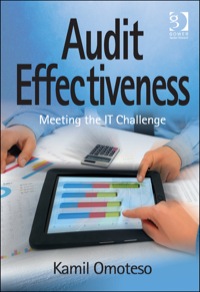CP7-1 Analyzing the Effects of Four Alternative Inventory Costing Methods [LO 7-3] Scrappers Supplies tracks the number of units purchased and cold throughout each accounting perfod but applies its inventory costing method at the end of each period, as if it uses a periodic Inventory system. Assume its accounting records provided the following Information at the end of the annual accounting period, December 31 Units Unit Cost Transactions Beginning inventory, January 1 Transactions during the year: a. Purchase on account, March 2 b. Cash sale. April 1 (546 each) C. Purchase on account. Tune De d. Cash sale, August 1 ($46 each) TIP. Although the purchases and sales are listed in chronolog nological order. Scrappers determines the cost of goods sold after all of the purchases have occurred Required: 1. Compute the cost of goods avalable for sale, cost of ending inventory, and cost of goods following Inventory costing methods: (Round "Cost per Unit" to 2 decimal places) a. Last-n, first-out b. Weighted average cost. c. First-n, first-out d. Specific Identification, assuming that the April 1ale was selected one.ith from the beginning purchase of March 2 Assume that the sale of August 1 was selected from the purchase of June 30 2. Of the fout methoos, which will result in the highest gross profit? Which will result in the lowest income taxes? foons from the UNCULHILM LES! Complete this question by entering your answers in the tabs below. Req IA Req 1C Reg 1D Req 2 R e 28 a. Compute the cost of goods available for sale, cost of ending Inventory, and cost of goods sold at December 31 using the LIFO method. (Round "Cost per Unit" anwers to 2 decimal places.) LIFO (Periodic Units Cost per Unit Total Beginning Inventory Purchases March 2 June 30 Total Purchases Goods Available for Sale Cost of Goods Sold Units from Beginning Inventory Units from March 2 Purchase Units from June 30 Purchase Total Cost of Goods Sold ventory R18 > Complete this question by entering your answers in the tabs below. Reg 1A Reg 13 Req 1C ! Req 10 Reg 2A Reg 28 b. Compute the cost of goods available for sale, cost of ending Intory, and cost of goods sold at December 31 using the Weighted average method. (Round Cost per Unit anwers to 2 decimal places.) Weighted Average Cost (Periodic) Units Cost per Unit Cost per Total Beginning inventory Purchases March 2 June 30 Total Purchases Goods Available for Sale Cost of Goods Sold Ending inventory Complete this question by entering your answers in the tabs below. Req IA Req 10 Req 1C Req1D Req 2 Reg 28 c. Compute the cost of goods available for sale, cost of ending inventory, and cost of goods sold at December 31 using the FIFO method. (Round "Cost per Unit" anwers to 2 decimal places.) FIFO (Periodic) Units Cost per toit Total So Beginning Inventory Purchases March 2 June 30 Total Purchases Goods Available for Sale Cost of Goods Sold Units from Beginning inventory Units from March 2 Purchase Units from June 30 Purchase Total Cost of Goods Solo Eve R 1B Reg 10 > Req 1A Req 18 Req 1C Req 10 Red 2A Req 2B d. Compute the cost of goods available for sale, cost of ending inventory, and cost of goods sold at December 31 using the Specific identification method. Assume that the April 1 sale was selected one-fifth from the beginning inventory and four-fifths from the purchase of March 2. Assume that the sale of August 1 was selected from the purchase of June 30. (Round "Cost per Unit anwers to 2 decimal places.) Show less Specific Identification Periodic) Units Cost per Unit Beginning inventory Purchases March 2 June 30 Total Purchases Goods valable for Sale Cost of Goods Sold Units from Beginning inventory Units from March 2Purchase Units from Dune 30 Purchase Tota Cost of Gooss so Ring 22











